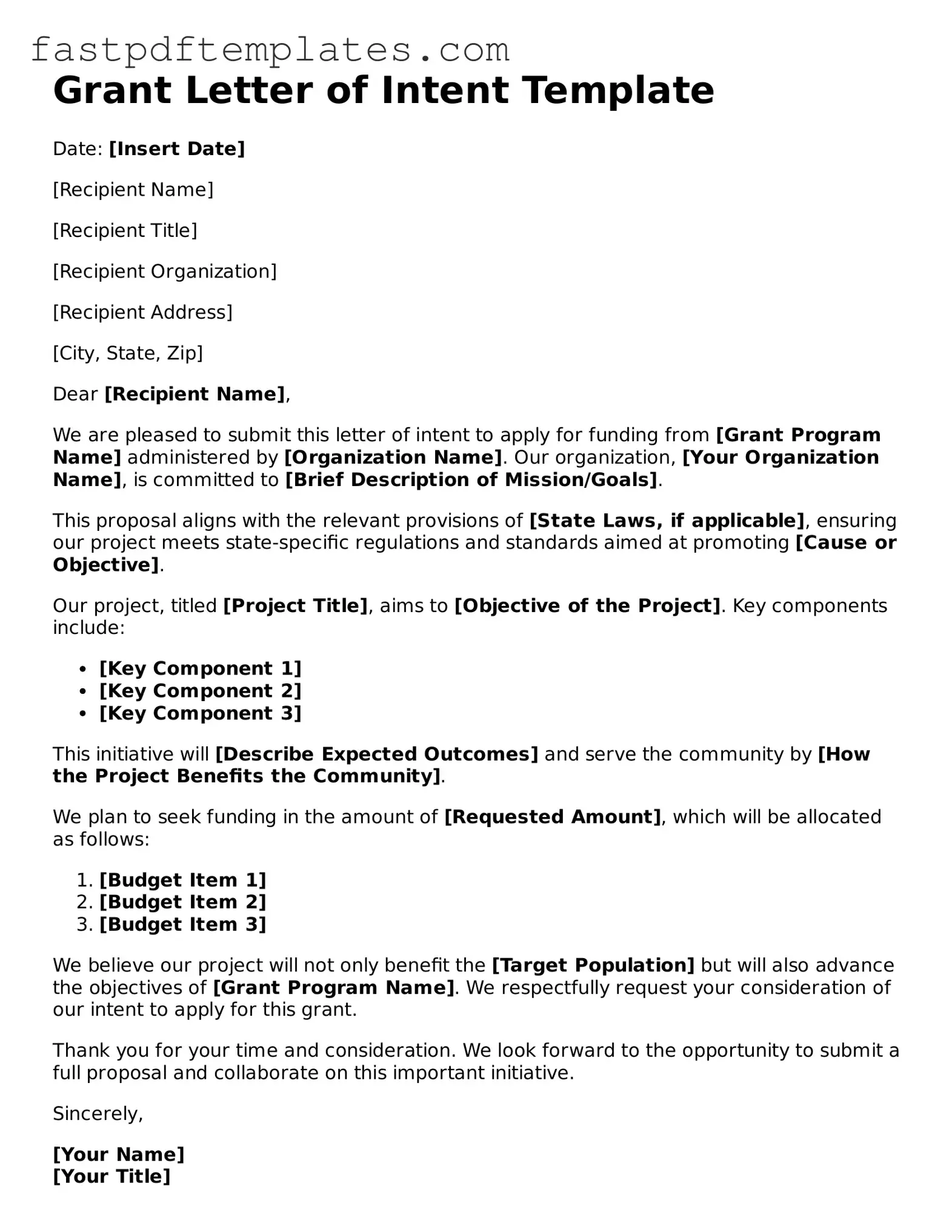The Grant Proposal is closely related to the Grant Letter of Intent. While the letter serves as an initial communication expressing interest in funding, the proposal is a more detailed document outlining the specific project, budget, and objectives. Both documents aim to secure funding, but the proposal requires extensive information, including methodologies and anticipated outcomes. A well-crafted proposal builds upon the foundation laid by the letter of intent, ensuring that the funding organization fully understands the project’s scope and significance.
The Memorandum of Understanding (MOU) shares similarities with the Grant Letter of Intent in that both documents outline intentions between parties. An MOU is often used to establish a partnership or collaboration, detailing the roles and responsibilities of each party involved. Like the letter of intent, an MOU is not legally binding but serves as a formal acknowledgment of mutual goals. Both documents set the stage for future agreements and help clarify expectations before committing to a more formal contract.
The Letter of Inquiry (LOI) is another document that parallels the Grant Letter of Intent. An LOI is typically a brief communication sent to a funding organization to gauge interest before submitting a full proposal. Similar to the letter of intent, it outlines the project’s purpose and significance but is usually shorter and less formal. Both documents serve as a way to initiate dialogue with funders, allowing organizations to assess whether their project aligns with the funder's priorities before investing time in a comprehensive proposal.
The Concept Paper is akin to the Grant Letter of Intent, as it serves to introduce a project idea to potential funders. This document typically includes a concise summary of the project, its objectives, and the anticipated impact. While the letter of intent may simply express interest, the concept paper delves deeper into the project’s rationale. Both documents are essential tools for initiating conversations with funders, providing a snapshot of the project to attract further interest and support.
The Funding Application Form is also similar to the Grant Letter of Intent, as both are essential steps in the funding process. The funding application is a more comprehensive document that requires detailed information about the project, including budgetary needs, timelines, and evaluation methods. While the letter of intent serves as an introduction, the funding application is the formal request for financial support. Both documents are critical in securing funding, with the letter often paving the way for a successful application.
The Partnership Agreement can be compared to the Grant Letter of Intent, as both documents outline the intentions of parties involved in a project. A partnership agreement is more formal and legally binding, detailing the roles, responsibilities, and contributions of each party. In contrast, the letter of intent is often more informal and serves to express interest in collaboration. Both documents are crucial in establishing clear communication and expectations between organizations, ensuring that all parties are aligned before moving forward.
Finally, the Business Plan shares similarities with the Grant Letter of Intent in that both documents articulate a vision for a project or initiative. A business plan outlines the operational and financial aspects of a venture, while the letter of intent focuses on the intent to pursue funding. Both documents aim to persuade stakeholders of the project’s viability and importance. They serve as foundational tools for securing support, whether through funding or partnership opportunities, and help clarify the path forward for the project.
